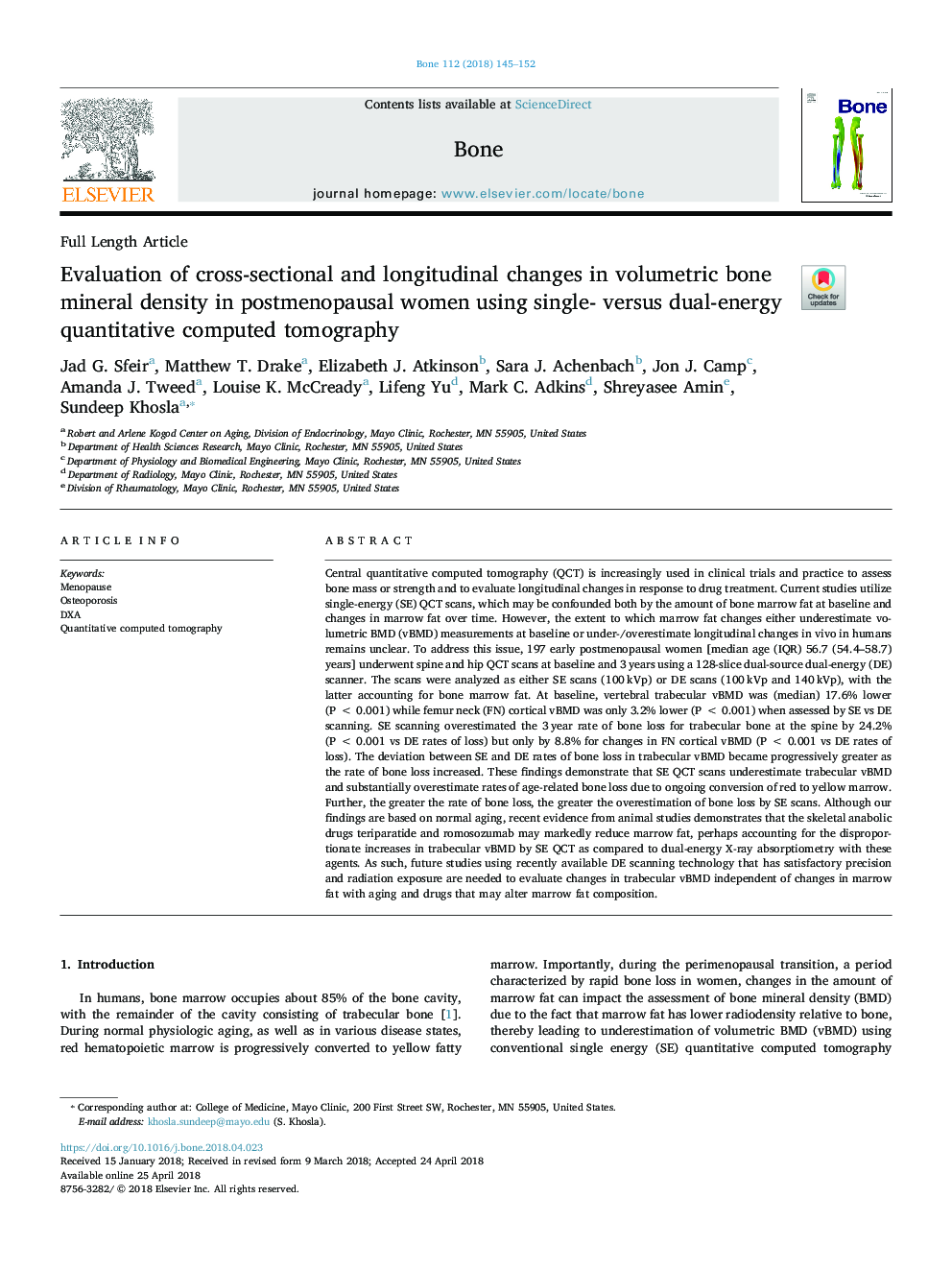| کد مقاله | کد نشریه | سال انتشار | مقاله انگلیسی | نسخه تمام متن |
|---|---|---|---|---|
| 8624879 | 1568107 | 2018 | 8 صفحه PDF | دانلود رایگان |
عنوان انگلیسی مقاله ISI
Evaluation of cross-sectional and longitudinal changes in volumetric bone mineral density in postmenopausal women using single- versus dual-energy quantitative computed tomography
ترجمه فارسی عنوان
بررسی تغییرات مقطعی و طولی در تراکم معدنی استخوانی حجمی در زنان یائسه با استفاده از تکنیک کوچک یکطرفه دوگانه انرژی
دانلود مقاله + سفارش ترجمه
دانلود مقاله ISI انگلیسی
رایگان برای ایرانیان
کلمات کلیدی
موضوعات مرتبط
علوم زیستی و بیوفناوری
بیوشیمی، ژنتیک و زیست شناسی مولکولی
زیست شناسی تکاملی
چکیده انگلیسی
Central quantitative computed tomography (QCT) is increasingly used in clinical trials and practice to assess bone mass or strength and to evaluate longitudinal changes in response to drug treatment. Current studies utilize single-energy (SE) QCT scans, which may be confounded both by the amount of bone marrow fat at baseline and changes in marrow fat over time. However, the extent to which marrow fat changes either underestimate volumetric BMD (vBMD) measurements at baseline or under-/overestimate longitudinal changes in vivo in humans remains unclear. To address this issue, 197 early postmenopausal women [median age (IQR) 56.7 (54.4-58.7) years] underwent spine and hip QCT scans at baseline and 3â¯years using a 128-slice dual-source dual-energy (DE) scanner. The scans were analyzed as either SE scans (100â¯kVp) or DE scans (100â¯kVp and 140â¯kVp), with the latter accounting for bone marrow fat. At baseline, vertebral trabecular vBMD was (median) 17.6% lower (Pâ¯<â¯0.001) while femur neck (FN) cortical vBMD was only 3.2% lower (Pâ¯<â¯0.001) when assessed by SE vs DE scanning. SE scanning overestimated the 3â¯year rate of bone loss for trabecular bone at the spine by 24.2% (Pâ¯<â¯0.001 vs DE rates of loss) but only by 8.8% for changes in FN cortical vBMD (Pâ¯<â¯0.001 vs DE rates of loss). The deviation between SE and DE rates of bone loss in trabecular vBMD became progressively greater as the rate of bone loss increased. These findings demonstrate that SE QCT scans underestimate trabecular vBMD and substantially overestimate rates of age-related bone loss due to ongoing conversion of red to yellow marrow. Further, the greater the rate of bone loss, the greater the overestimation of bone loss by SE scans. Although our findings are based on normal aging, recent evidence from animal studies demonstrates that the skeletal anabolic drugs teriparatide and romosozumab may markedly reduce marrow fat, perhaps accounting for the disproportionate increases in trabecular vBMD by SE QCT as compared to dual-energy X-ray absorptiometry with these agents. As such, future studies using recently available DE scanning technology that has satisfactory precision and radiation exposure are needed to evaluate changes in trabecular vBMD independent of changes in marrow fat with aging and drugs that may alter marrow fat composition.
ناشر
Database: Elsevier - ScienceDirect (ساینس دایرکت)
Journal: Bone - Volume 112, July 2018, Pages 145-152
Journal: Bone - Volume 112, July 2018, Pages 145-152
نویسندگان
Jad G. Sfeir, Matthew T. Drake, Elizabeth J. Atkinson, Sara J. Achenbach, Jon J. Camp, Amanda J. Tweed, Louise K. McCready, Lifeng Yu, Mark C. Adkins, Shreyasee Amin, Sundeep Khosla,
